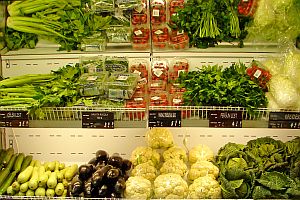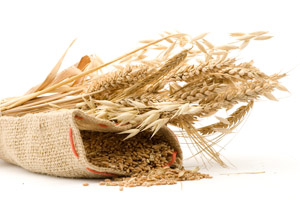








 Getting adequate amounts of fiber in your diet is important for a variety of reasons. The primary ones are that it improves digestion and contributes to lowering your risk of contracting chronic diseases such as diabetes, cancer and heart disease. The FDA recommends that adults get at least 25 to 30 grams in their diet every day. However, our typical western diet, which is high in refined grains and processed food, provides the average person only about 15 grams of fiber per day.
Getting adequate amounts of fiber in your diet is important for a variety of reasons. The primary ones are that it improves digestion and contributes to lowering your risk of contracting chronic diseases such as diabetes, cancer and heart disease. The FDA recommends that adults get at least 25 to 30 grams in their diet every day. However, our typical western diet, which is high in refined grains and processed food, provides the average person only about 15 grams of fiber per day.
There are two different types of dietary fiber: soluble and insoluble, each of which fulfill an important task. Soluble fiber dissolves in water (and our stomach’s digestive juices), transforming into a gel-like substance that helps to lower levels of “bad” LDL cholesterol and reduce high blood sugar. The primary purpose of insoluble fiber is to work as an indigestible bulking agent to keeps things moving along the digestive tract, which aids elimination and reduces the risk of constipation, hemorrhoids and diverticulosis. Fiber may also help you to lose weight, and is important in maintaining general bowel health.
Among the best sources of both soluble and insoluble fiber are the following:
So be sure to add more from the above list to your weekly menu and enjoy the many benefits that increased fiber has to offer!
 Fiber is important in your diet for a number of reasons, the main ones being that it improves digestion and lowers your risk of contracting diabetes, cancer and heart disease. It is recommended that adults get from 25 to 30 grams of fiber in their diet every day.
Fiber is important in your diet for a number of reasons, the main ones being that it improves digestion and lowers your risk of contracting diabetes, cancer and heart disease. It is recommended that adults get from 25 to 30 grams of fiber in their diet every day.
There are two types of dietary fiber: soluble and insoluble. Soluble fiber dissolves in water (and digestive juices), forming a gel-like substance that helps to lower cholesterol levels and reduce high blood sugar, while insoluble fiber is an indigestible bulking agent that keeps things moving in the digestive tract, aiding in elimination, and reducing occurrences of constipation, hemorrhoids and diverticulosis.
Soluble fiber can be found such foods as oats, apples, pears, lentils and carrots, while insoluble fiber is typically found in whole grain flour, nuts, broccoli, seeds and wheat bran. Beans may be one of the best sources, as they contain both soluble and insoluble fiber.
Fiber has been found to:
Try to avoid eating processed foods, as these are usually quite low in fiber. Your best choice is to eat whole foods such as fresh vegetables and whole grains, which will provide you with a high-fiber diet.
It’s easy to incorporate high-fiber foods into your diet. Oatmeal at breakfast (preferably the steel cut variety, which has considerably more fiber than the instant kind) with a little fresh fruit added makes a great high-fiber start to your day. If you get hungry at work, instead of heading for the candy machine, try bringing some dried fruit or a handful of nuts. You can also add beans or chopped vegetables to soups and stews for extra taste and fiber. Your body will thank you!